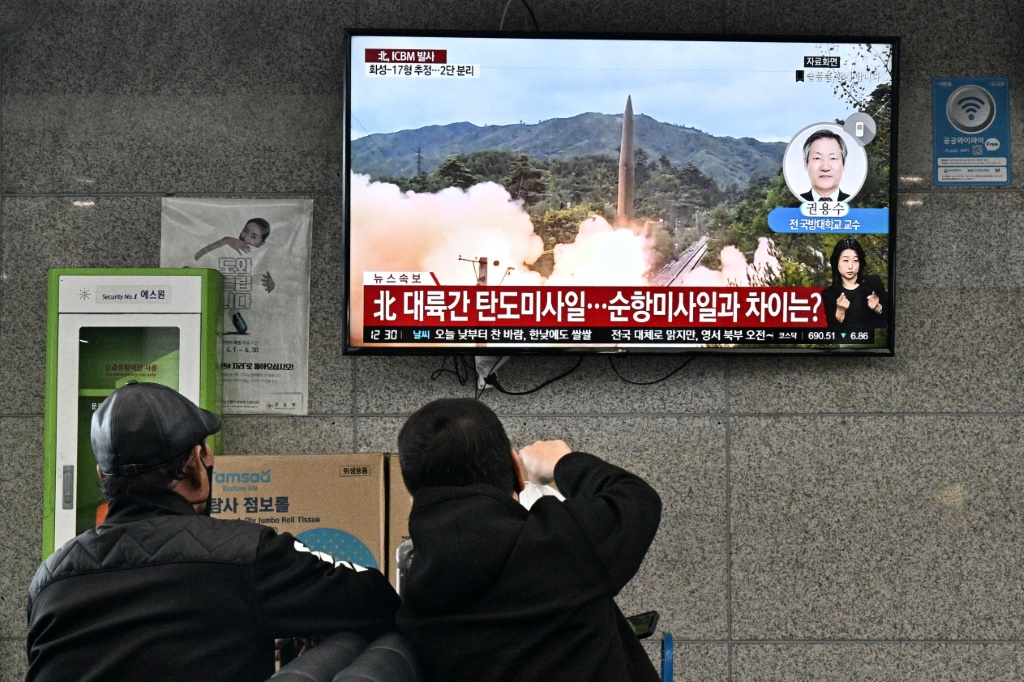North Korea has fired an “unidentified ballistic missile”, Seoul’s military said Thursday, the latest in a record-breaking blitz of launches as Pyongyang warned of a “fiercer” military response to the US and its regional allies.

“North Korea fires an unidentified ballistic missile into East Sea,” South Korea’s Joint Chiefs of Staff said, referring to the body of water also known as the Sea of Japan.
Earlier this week, US President Joe Biden discussed North Korea’s spate of recent missile tests with his Chinese counterpart Xi Jinping in Bali, Indonesia on the sidelines of the G20 summit.
The US leader pushed China to use its influence to rein in North Korea after the wave of missile launches raised fears the reclusive regime would soon carry out its seventh nuclear test.
Biden also held talks with his South Korean counterpart Yoon Suk-yeol and Japanese Prime Minister Fumio Kishida on Sunday to discuss ways to address the threat posed by the North’s “unlawful weapons of mass destruction and ballistic missile programs”, the White House said.
On Thursday, North Korea’s minister of foreign affairs, Choe Son Hui, slammed these discussions, saying they were “bringing the situation on the Korean peninsula to an unpredictable phase.”
“The US ‘bolstered offer of extended deterrence’ and the daily-increasing military activities of the allied forces around the Korean peninsula are foolish acts,” Choe said in a statement carried by state news agency KCNA.
The more Washington works to strengthen its security alliance with Tokyo and Seoul, “the fiercer the DPRK’s military counteraction will be”, Choe said, referring to the North by its official name.
Experts said the Thursday missile launch was “timed” to coincide with the statement from Pyongyang’s foreign minister.
The North “fired the missile after releasing the statement hours earlier in an attempt to justify the launch to send its message to the US and Japan,” Cheong Seong-chang, a researcher at the Sejong Institute told AFP.
– UN gridlock –
Earlier this month, North Korea conducted a flurry of launches, including an intercontinental ballistic missile, which Seoul said appeared to have failed.
Pyongyang also fired a short-range ballistic missile that crossed the de facto maritime border between the two countries and landed near the South’s territorial waters for the first time since the end of the Korean War in 1953.
President Yoon said at the time that it was “effectively a territorial invasion”.
Both launches were part of a November 2 barrage in which Pyongyang fired 23 missiles — more than it launched during the whole of 2017, the year of “fire and fury” when Kim traded barbs with then US president Donald Trump on Twitter and in state media.
Experts say North Korea is seizing the opportunity to conduct banned missile tests, confident of escaping further UN sanctions due to Ukraine-linked gridlock at the United Nations.
China, Pyongyang’s main diplomatic and economic ally, joined Russia in May in vetoing a US-led bid at the UN Security Council to tighten sanctions on North Korea.
Washington has responded to North Korea’s sanction-busting missile tests by extending exercises with South Korea and deploying a strategic bomber.
Pyongyang has also been under a self-imposed coronavirus blockage since early 2020, which experts say would limit the impact of any additional external sanctions.








